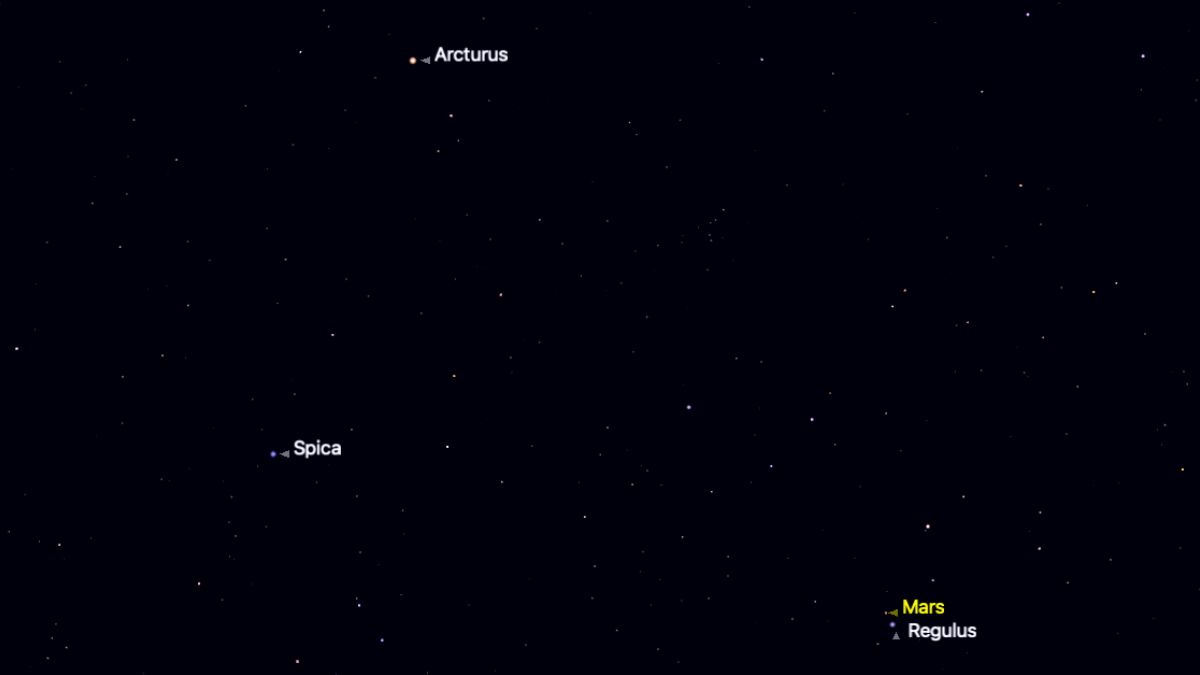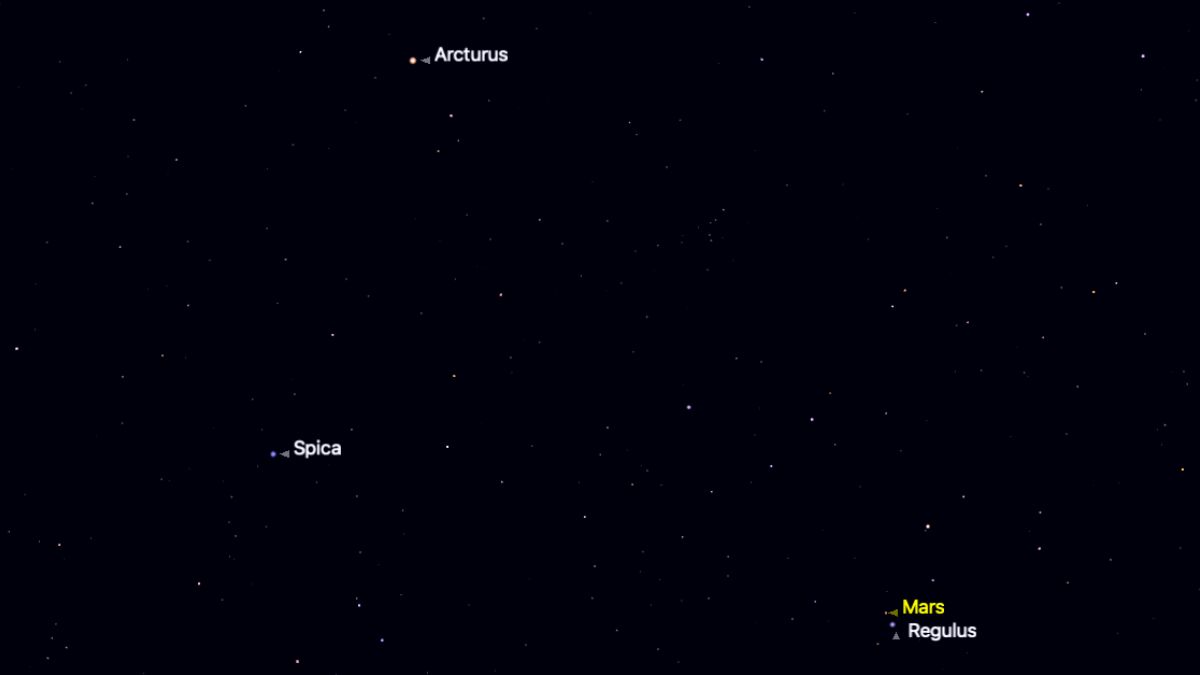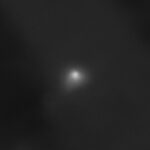Now Reading: Mars joins the Spring Triangle this week: Here’s when and how to see it
-
01
Mars joins the Spring Triangle this week: Here’s when and how to see it
Mars joins the Spring Triangle this week: Here’s when and how to see it

Look to the west on the nights following June 18 to see Mars sweep past the bright star Regulus to enter the Spring Triangle – a formation of three prominent stellar bodies that are visible as spring transitions to summer in the northern hemisphere.
Each of the three massive stars that make up the Spring Triangle – Spica, Arcturus and Regulus – belongs to a different constellation in the night sky.
Orange-hued Arcturus can be found high above the southwestern horizon in the hours following sunset in June, surrounded by stars from the constellation Bootes, the herdsman. Blue-white Spica is visible almost directly below, embedded in the constellation Virgo, while kingly Regulus – often referred to as the heart of the lion in Leo – can be found close to the western horizon, completing the cosmic triangle.
Eagle-eyed stargazers may have noticed Mars drawing closer to Regulus in recent weeks as its orbit carries it inexorably along the line of the ecliptic – the name given to the apparent path taken by the sun and planets as they drift through Earth’s sky.

Mars will be positioned close to the upper left of Regulus in the hours following sunset on June 18, with less than 1 degree separating the two celestial bodies. For reference, 1 degree is roughly the equivalent width of your little finger tip when held out at arms length against the night sky.
By the following night, Mars will have officially entered the Spring Triangle, having (just) crossed the imaginary line joining Regulus and Arcturus. The Red Planet will continue to skim along the lower edge of the triangle until it moves beyond Spica in mid September.
Stargazers hoping to explore the night sky for themselves should check out our guides to the best telescope and binocular deals available in 2025. Those new to the pursuit should also read our list of the best smartphone stargazing apps, many of which use augmented reality technology to help users navigate the multitude of stars and deep sky objects that are visible from Earth.
Editor’s Note: If you would like to share your astrophotography with Space.com’s readers, then please send your photo(s), comments, and your name and location to spacephotos@space.com.
Stay Informed With the Latest & Most Important News
Previous Post
Next Post
-
 012024 in Review: Highlights from NASA in Silicon Valley
012024 in Review: Highlights from NASA in Silicon Valley -
 02Panasonic Leica Summilux DG 15mm f/1.7 ASPH review
02Panasonic Leica Summilux DG 15mm f/1.7 ASPH review -
 03How New NASA, India Earth Satellite NISAR Will See Earth
03How New NASA, India Earth Satellite NISAR Will See Earth -
 04And Thus Begins A New Year For Life On Earth
04And Thus Begins A New Year For Life On Earth -
 05Astronomy Activation Ambassadors: A New Era
05Astronomy Activation Ambassadors: A New Era -
06SpaceX launch surge helps set new global launch record in 2024
-
 07Space Force plans new ‘Futures Command’ amid pressure to speed up modernization
07Space Force plans new ‘Futures Command’ amid pressure to speed up modernization



















